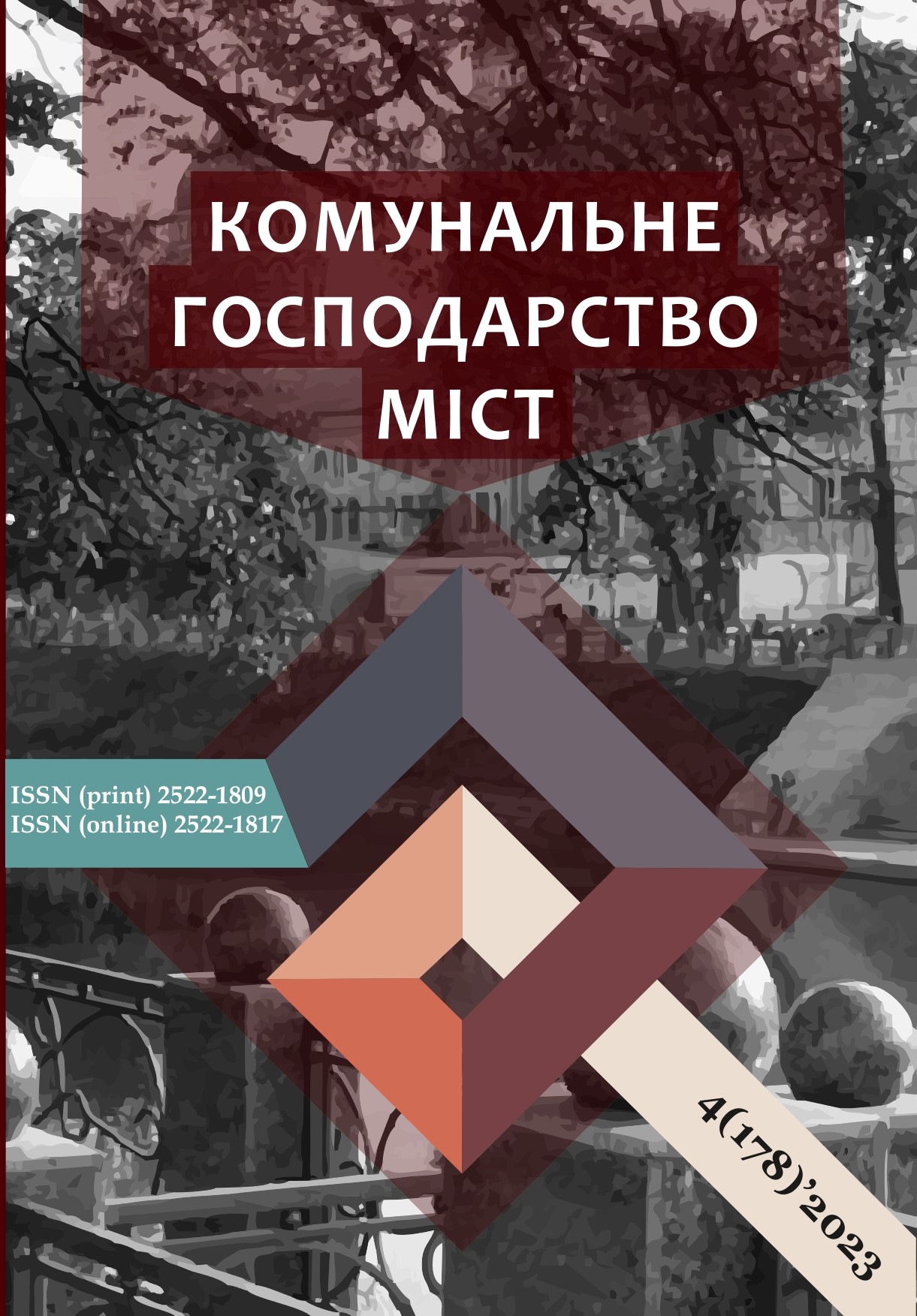SIMULATION OF A POSSIBLE SMOKING ZONE IN A DESTROYED SHELTER
DOI:
https://doi.org/10.33042/2522-1809-2023-4-178-210-218Keywords:
Shelter, dangerous factors of fire, ventilation, evacuation, PyroSimAbstract
The purpose of the presented work is to create a model for calculating the process of the spread of dangerous fire factors and determining the effectiveness of various engineering and technical, organizational measures and means aimed at increasing the duration of people's stay in a civil defense building in the conditions of hostilities. The authors of the work conducted an analysis of scientific research in areas such as "Modeling of fire and analysis of smoke propagation at metro stations in different fire locations" and "Modeling of flame and smoke propagation in an underground garage under different ventilation conditions."
The authors developed two scenarios of the spread of dangerous fire factors. The first scenario is the spread of fire hazards without taking into account ventilation other than open doorways. The second scenario is the spread of dangerous fire factors taking into account supply ventilation through three ventilation channels. The ventilation channels were assumed to have a diameter of 0.3048 m with a volumetric flow rate of 0.5 m3/s. The researchers determined the effectiveness of the ventilation in the PyroSim software during the blocking of escape routes in the shelter. The ventilation efficiency factor 1.351 or 135.1%. The authors conducted a simulation of the shelter after a missile hit and the destruction of the basement ceiling (floor of the first floor). The time of blocking the evacuation routes was determined according to various parameters in accordance with DSTU 8828:2019, namely visibility, temperature, concentration of oxygen oxide and carbon dioxide at a height of 1.7 m from the floor level.
The work is the basis for the development of engineering and technical and organizational measures to increase the level of fire safety and ensure the safety of the population.
References
Mayboroda, R.I., Otrosh, Yu.A., Romin, A.V. (2022). Problemni pytannya zakhystu tsyvilʹnoho naselennya vid nebezpechnykh faktoriv artyleriysʹkoho ta raketnoho vohnyu pid chas voyennykh (boyovykh) diy. Materialy Mizhnarodnoyi naukovo-praktychnoyi konferentsiyi “Problems of Emergency Situations” (PES-2022), 71–72.
Oliynyk, O.S., Otrosh, Yu.A., Rashkevych, N.V. (2022). Problematyka zbilʹshennya chasu perebuvannya lyudey v ukrytti pid chas boyovykh diy za dopomohoyu pryrodnoyi ventylyatsiyi. Mizhnarodna naukovo-praktychna konferentsiya «Problemy pozhezhnoyi bezpeky 2022» (Fire Safety Issues 2022), 107-108.
Zakon Ukrayiny Pro vnesennya zmin do deyakykh zakonodavchykh aktiv Ukrayiny shchodo zabezpechennya vymoh tsyvilʹnoyi zakhystu pid chas planuvannya ta zabudovy terytoriy. Retrieved from: https://zakon.rada.gov.ua/laws/show/2486-20#Text
Ryatuvalʹnyky likvidovuyutʹ naslidky rosiysʹkoyi ataky po zhytlovomu budynku u Dnipri. Retrieved from: https://dp.dsns.gov.ua/news/nadzvicaini-podiyi/riatuvalniki-likvidovuiut-naslidki-rosiiskoyi-ataki-po-zitlovomu-budinku-v-dnipri
Operatyvna informatsiya shchodo likvidatsiyi naslidkiv obstrilu u Zaporizhzhi stanom na 07:00 3 bereznya. Retrieved from: https://zp.dsns.gov.ua/uk/news/nadzvicaini-podiyi/operativna-informaciia-shhodo-likvidaciyi-naslidkiv-obstrilu-u-zaporizzi-stanom-na-0700
חוק ההתגוננות האזרחית, תשי"א-1951 (Zakon pro tsyvilʹnu oboronu, Izrayilʹ 1951-77).
Guz, L., Grzesik, M., Guz, Ewa (2021) Simulation of flames and smoke spreading in an underground garage under different ventilation conditions. Journal of Physics Conference Series 1736(1):012050. Retrieved from: http://dx.doi.org/10.1088/1742-6596/1736/1/012050
Linlin, Y., & Mo, Y. (2021). Fire simulation and smoke spread analysis of subway stations at different fire locations. E3S Web of Conferences, 248(44), 03003. http://dx.doi.org/10.1051/e3sconf/202124803003
Oliynyk, O.S., Otrosh, Yu.A., Romin, A.V. (2022). Modelyuvannya poshyrennya nebezpechnykh faktoriv pozhezhi za dopomohoyu prykladnoho prohramnoho zabezpechennya PyroSim. Materialy kruhloho stolu (vebinaru) «Zapobihannya nadzvychaynykh sytuatsiy ta yikh likvidatsiya», 69–70.
Code of civil protection of Ukraine. Retrieved from: https://zakon.rada.gov.ua/laws/show/5403-17#Text
DSTU 8828:2019 Pozhezhna bezpeka. Zahalʹni polozhennya. Retrieved from: https://zakon.isu.net.ua/sites/default/files/normdocs/dstu_8828_2019.pdf
Nakaz Ministerstva vnutrishnikh sprav Ukrayiny vid 09.07.2018 № 579 Pro zatverdzhennya vymoh shchodo pytanʹ vykorystannya ta obliku fondu zakhysnykh sporud tsyvilʹnoho zakhystu. Retrieved from: https://zakon.rada.gov.ua/laws/show/z0879-18#Text
DBN-V.2.2-5-97 Zakhysni sporudy tsyvilʹnoyi zakhystu. Retrieved from: http://online.budstandart.com/ru/catalog/doc-page.html?id_doc=4653
Downloads
Published
How to Cite
Issue
Section
License
The authors who publish in this collection agree with the following terms:
• The authors reserve the right to authorship of their work and give the magazine the right to first publish this work under the terms of license CC BY-NC-ND 4.0 (with the Designation of Authorship - Non-Commercial - Without Derivatives 4.0 International), which allows others to freely distribute the published work with a mandatory reference to the authors of the original work and the first publication of the work in this magazine.
• Authors have the right to make independent extra-exclusive work agreements in the form in which they were published by this magazine (for example, posting work in an electronic repository of an institution or publishing as part of a monograph), provided that the link to the first publication of the work in this journal is maintained. .
• Journal policy allows and encourages the publication of manuscripts on the Internet (for example, in institutions' repositories or on personal websites), both before the publication of this manuscript and during its editorial work, as it contributes to the emergence of productive scientific discussion and positively affects the efficiency and dynamics of the citation of the published work (see The Effect of Open Access).

